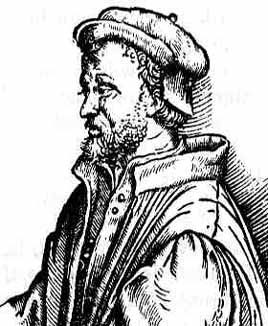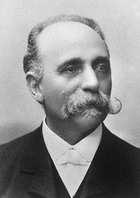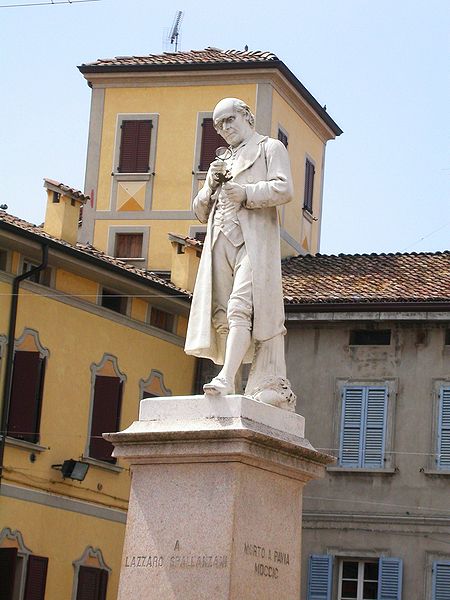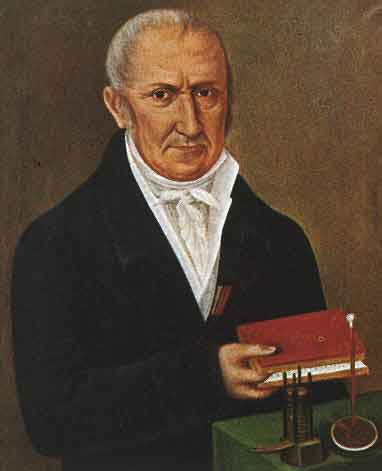Team:UNIPV-Pavia/Pavia/Vip
From 2010.igem.org
(→Alessandro Volta) |
|||
| Line 12: | Line 12: | ||
<table border="0" align="center" width="100%"><tr><td align="justify" valign="top" style="padding:20px"> | <table border="0" align="center" width="100%"><tr><td align="justify" valign="top" style="padding:20px"> | ||
<html><p align="center"><font size="4"><b>"VIP"</b></font></p></html><hr><br> | <html><p align="center"><font size="4"><b>"VIP"</b></font></p></html><hr><br> | ||
| - | + | Pavia and its University owe their prestige also to many important people, that, over the centuries, lived, studied and taught here. Below we show some of the personalities, in science, medicine and mathematics, that made great Pavia. | |
==Gerolamo Cardano== | ==Gerolamo Cardano== | ||
| - | He was born in Pavia , | + | He was born in Pavia , on September 24, 1501, the illegitimate child of Fazio Cardano, a mathematically gifted lawyer, who was a friend of Leonardo da Vinci.<br> |
In 1520, he entered the University of Pavia and later in Padua studied medicine. His eccentric and confrontational style did not earn him many friends and he had a difficult time finding work after his studies had ended. In 1525, Cardano repeatedly applied to the College of Physicians in Milan, but was not admitted due to his reputation and illegitimate birth.<br> | In 1520, he entered the University of Pavia and later in Padua studied medicine. His eccentric and confrontational style did not earn him many friends and he had a difficult time finding work after his studies had ended. In 1525, Cardano repeatedly applied to the College of Physicians in Milan, but was not admitted due to his reputation and illegitimate birth.<br> | ||
Eventually, he managed to develop a considerable reputation as a physician and his services were highly valued at the courts. He was the first to describe typhoid fever.<br> | Eventually, he managed to develop a considerable reputation as a physician and his services were highly valued at the courts. He was the first to describe typhoid fever.<br> | ||
| Line 21: | Line 21: | ||
Cardano invented several mechanical devices including the combination lock, the gimbal consisting of three concentric rings allowing a supported compass or gyroscope to rotate freely, and the Cardan shaft with universal joints, which allows the transmission of rotary motion at various angles and is used in vehicles to this day. He studied hypocycloids, published in de proportionibus 1570. The generating circles of these hypocycloids were later named Cardano circles or cardanic circles and were used for the construction of the first high-speed printing presses. He made several contributions to hydrodynamics and held that perpetual motion is impossible, except in celestial bodies. He published two encyclopedias of natural science which contain a wide variety of inventions, facts, and occult superstitions. He also introduced the Cardan grille, a cryptographic tool, in 1550<br> | Cardano invented several mechanical devices including the combination lock, the gimbal consisting of three concentric rings allowing a supported compass or gyroscope to rotate freely, and the Cardan shaft with universal joints, which allows the transmission of rotary motion at various angles and is used in vehicles to this day. He studied hypocycloids, published in de proportionibus 1570. The generating circles of these hypocycloids were later named Cardano circles or cardanic circles and were used for the construction of the first high-speed printing presses. He made several contributions to hydrodynamics and held that perpetual motion is impossible, except in celestial bodies. He published two encyclopedias of natural science which contain a wide variety of inventions, facts, and occult superstitions. He also introduced the Cardan grille, a cryptographic tool, in 1550<br> | ||
Cardano was accused of heresy in 1570 because he had computed and published the horoscope of Jesus in 1554. Apparently, his own son contributed to the prosecution, bribed by Tartaglia. He was arrested, had to spend several months in prison and was forced to abjure his professorship. He moved to Rome, received a lifetime annuity from Pope Gregory XIII (after first having been rejected by Pope Pius V) and finished his autobiography.<br> | Cardano was accused of heresy in 1570 because he had computed and published the horoscope of Jesus in 1554. Apparently, his own son contributed to the prosecution, bribed by Tartaglia. He was arrested, had to spend several months in prison and was forced to abjure his professorship. He moved to Rome, received a lifetime annuity from Pope Gregory XIII (after first having been rejected by Pope Pius V) and finished his autobiography.<br> | ||
| - | He died in Rome, | + | He died in Rome, on September 21, 1576. |
==Camillo Golgi== | ==Camillo Golgi== | ||
| - | Camillo Golgi was born in Corteno (Val Camonica). His father was a physician and district medical officer.<br> | + | Camillo Golgi was born in Corteno (Val Camonica), on July 7, 1843. His father was a physician and district medical officer.<br> |
Golgi studied at the University of Pavia, where he worked in the experimental pathology laboratory under Giulio Bizzozero, who elucidated the properties of bone marrow. He graduated in 1865. He spent much of his career studying the central nervous system. Tissue staining techniques in the later half of the 19th century were inadequate for studying nervous tissue. While working as chief medical officer in a psychiatric hospital, he experimented with metal impregnation of nervous tissue, using mainly silver (silver staining).<br> | Golgi studied at the University of Pavia, where he worked in the experimental pathology laboratory under Giulio Bizzozero, who elucidated the properties of bone marrow. He graduated in 1865. He spent much of his career studying the central nervous system. Tissue staining techniques in the later half of the 19th century were inadequate for studying nervous tissue. While working as chief medical officer in a psychiatric hospital, he experimented with metal impregnation of nervous tissue, using mainly silver (silver staining).<br> | ||
He discovered a method of staining nervous tissue which would stain a limited number of cells at random, in their entirety. This enabled him to view the paths of nerve cells in the brain for the first time. He called his discovery the "black reaction" (in Italian, reazione nera), which later received his name (Golgi's method) or Golgi stain. The reason for the random staining is still not understood.<br> | He discovered a method of staining nervous tissue which would stain a limited number of cells at random, in their entirety. This enabled him to view the paths of nerve cells in the brain for the first time. He called his discovery the "black reaction" (in Italian, reazione nera), which later received his name (Golgi's method) or Golgi stain. The reason for the random staining is still not understood.<br> | ||
| Line 32: | Line 32: | ||
In renal physiology Golgi is renowned for being the first to show that the distal tubulus of the nephron returns to its originating glomerulus, a finding that he published in 1889.<br> | In renal physiology Golgi is renowned for being the first to show that the distal tubulus of the nephron returns to its originating glomerulus, a finding that he published in 1889.<br> | ||
Golgi, together with Santiago Ramón y Cajal, received the <b>Nobel Prize in Physiology or Medicine in 1906</b> for his studies of the structure of the nervous system. | Golgi, together with Santiago Ramón y Cajal, received the <b>Nobel Prize in Physiology or Medicine in 1906</b> for his studies of the structure of the nervous system. | ||
| - | Golgi died | + | Golgi died on Pavia, Italy, in January 1926. |
==Lazzaro Spallanzani== | ==Lazzaro Spallanzani== | ||
| - | He was born in Scandiano in the modern province of Reggio Emilia, | + | He was born in Scandiano in the modern province of Reggio Emilia, on 10 January 1729 and died in Pavia, in 12 February 1799 Italy. Spallanzani was educated at the Jesuit College and started to study law at the University of Bologna, which he gave up soon and turned to science. Here, his famous kinswoman, Laura Bassi, was professor of physics and it is to her influence that his scientific impulse has been usually attributed. With her he studied natural philosophy and mathematics, and gave also great attention to languages, both ancient and modern, but soon abandoned them.<br> |
In 1754, at the age of 25 he became professor of logic, metaphysics and Greek in the University of Reggio. In 1762 he was ordained as a priest, 1763 he was moved to Modena, where he continued to teach with great assiduity and success, but devoted his whole leisure to natural science. He declined many offers from other Italian universities and from St Petersburg until 1768, when he accepted the invitation of Maria Theresa to the chair of natural history in the University of Pavia, which was then being reorganized. He also became director of the museum, which he greatly enriched by the collections of his many journeys along the shores of the Mediterranean Sea. In 1775, Spallanzani was elected a foreign member of the Royal Swedish Academy of Sciences.<br> | In 1754, at the age of 25 he became professor of logic, metaphysics and Greek in the University of Reggio. In 1762 he was ordained as a priest, 1763 he was moved to Modena, where he continued to teach with great assiduity and success, but devoted his whole leisure to natural science. He declined many offers from other Italian universities and from St Petersburg until 1768, when he accepted the invitation of Maria Theresa to the chair of natural history in the University of Pavia, which was then being reorganized. He also became director of the museum, which he greatly enriched by the collections of his many journeys along the shores of the Mediterranean Sea. In 1775, Spallanzani was elected a foreign member of the Royal Swedish Academy of Sciences.<br> | ||
[[Image:UNIPV_Pavia_Spallanzani.jpg|thumb]] | [[Image:UNIPV_Pavia_Spallanzani.jpg|thumb]] | ||
| Line 53: | Line 53: | ||
Furthermore, he was depicted upon the Italian 10,000 Lire (no longer in circulation) along with a sketch of his famous Voltaic Pile.<br> | Furthermore, he was depicted upon the Italian 10,000 Lire (no longer in circulation) along with a sketch of his famous Voltaic Pile.<br> | ||
Volta retired in 1819 in his estate in Camnago, a frazione of Como now called Camnago Volta after him, where he died on March 5, 1827.<br> | Volta retired in 1819 in his estate in Camnago, a frazione of Como now called Camnago Volta after him, where he died on March 5, 1827.<br> | ||
| + | |||
| + | </td> | ||
| + | </tr> | ||
| + | </table> | ||
| + | </td> | ||
| + | |||
| + | <td align="left" valign="top" width="15%"> | ||
| + | <table border="0" width="100%" height="100%"> | ||
| + | <tr align="right"><td height="15"> | ||
| + | [[Team:UNIPV-Pavia/Pavia|PAVIA]] | ||
| + | </td></tr> | ||
| + | <tr align="right"><td height="15"> | ||
| + | [[Team:UNIPV-Pavia/Pavia/Past|Past]] | ||
| + | </td></tr> | ||
| + | <tr align="right"><td height="15"> | ||
| + | [[Team:UNIPV-Pavia/Pavia/Athenaeum|Athenaeum]] | ||
| + | </td></tr> | ||
| + | <tr align="right"><td height="15"> | ||
| + | [[Team:UNIPV-Pavia/Pavia/Vip|Vip]] | ||
| + | </td></tr> | ||
| + | <tr align="right"><td height="15"> | ||
| + | [[Team:UNIPV-Pavia/Pavia/igempavia|iGEM]] | ||
| + | </td></tr> | ||
| + | <tr align="right"><td height="15"> | ||
| + | [[Team:UNIPV-Pavia/Pavia/Art|Art]] | ||
| + | </td></tr> | ||
| + | </table> | ||
| + | |||
| + | </td> | ||
| + | </table> | ||
Revision as of 14:39, 31 July 2010
|
|
|||||||||||||||||||
|
|
|
|||||||||||||||||
 "
"




